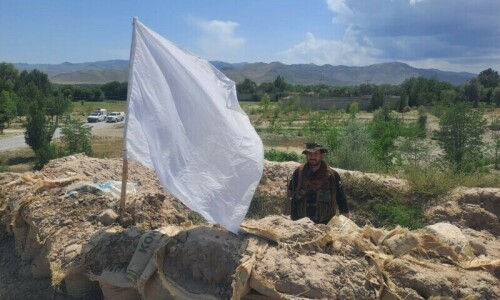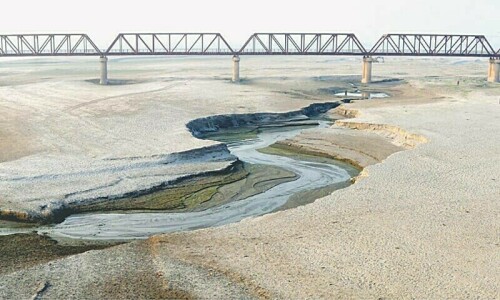
CZESTOCHOWA: Each August for the last 300 years, thousands of Poles have made a spiritual journey to the country's most revered monastery, home to an ancient Catholic icon believed to work miracles.
Carrying rosaries, crosses and hiking poles, believers of every age, entire families, scouts, soldiers, even the disabled, trek hundreds of kilometres – some more than 600 – to venerate the Black Madonna of Czestochowa.
The tradition goes back to 1711 when the bubonic plague decimated Warsaw's population. A brotherhood of knights trekked from the capital to Jasna Gora monastery in the southern city of Czestochowa when the epidemic suddenly ended to offer thanks to the Virgin Mary.
Since then, many Poles in this country of 38 million, more than 90 per cent of whom profess Roman Catholicism, believe the Madonna icon, whose dark skin bears two scars, holds special powers and helps protect the country during invasions and times of war.
“Everyone takes their intention to the Virgin Mary. I'm praying to pass my high school exams next year,” said 18-year-old high school student Agnieszka Wasowska who made the trek with her two sisters, Magdalena, 19, and Emilia, 16.
They were among some 4,000 pilgrims who made the 288-kilometre (180-mile) trek to Czestochowa in nine days, sleeping on straw in barns or pitching tents in farmers' fields.
“The worst is that you have to wake up at cosmic hours like 3:50 am for example, after having trekked 36 kilometres the previous day,” Magdalena told AFP. “Our feet hurt, but it doesn't matter.”Legend holds that the icon was painted by Saint Luke the apostle on a table top from the home of the Holy Family, according to the Jasna Gora website.
Records suggest it arrived in Poland during the 14th century, then miraculously saved the monastery from pillage by invading Swedes in the 17th century. In 1656, King Jan II Kazimierz Waza crowned the Black Madonna as queen and protector of Poland.
With a secure cult following at home, the relic's international reputation was boosted by Poland's native son, the late Pope John Paul II, who was deeply devoted to the Virgin Mary and the Black Madonna icon. He traveled here more than once after becoming pontiff in 1978 to pray at the Czestochowa shrine.
For some the pilgrimage has become an annual ritual, like Emilia who was on her seventh visit in seven years. Since her first trek with her mother and two sisters, she cannot imagine summer without a journey to see the icon despite the crowds.
The relic, which is not enormous at 122x82 centimetres (48x32 inches), is on display in a chapel inside the Jasna Gora monastery where the wait can be an hour or more as pilgrims slowly file by, some on their knees in penitence and supplication.
Yet the draw is so strong some challenge the odds to make the trip, like a group of 150 handicapped pilgrims who travelled from Warsaw to Jasna Gora in their wheelchairs.
“Along with their care givers, helpers and families, our group numbered a total 750 people. The youngest pilgrim was a year-and-a-half, the oldest was 80!” said Roman Catholic priest Father Stanislaw Jurczuk who organised the group.
“Aside from the religious dimension, it's a real 'school of life'. Care-givers learn how to live with handicapped persons, who have the opportunity to exit their everyday isolation and make friends,” said Father Jurczuk.
For the last 20 years, Polish soldiers have also been marching to Czestochowa.
The military was avowedly atheist under communism but since the old regime fell in 1989, it has been a faithful participant in the annual pilgrimage.
“We are marching in memory of our soldiers fallen in missions. I'm particularly thinking about my unit in Afghanistan,” said Darek, a 39-year-old second lieutenant with an air force parachute brigade who spent six months in Afghanistan three years ago.
“I thank the Virgin Mary for having allowed me to return home safe and sound. We risked death every day over there,” he added.
This year, 700 military personnel made the trek, including 30 or so soldiers from Germany, a dozen Slovaks and a Lithuanian. Some were Catholic, others Protestant, some even atheists.
“Not all those among us are believers,” Darek explained. “Some come along to experience the tradition of pilgrimage and Poland.”













































Dear visitor, the comments section is undergoing an overhaul and will return soon.